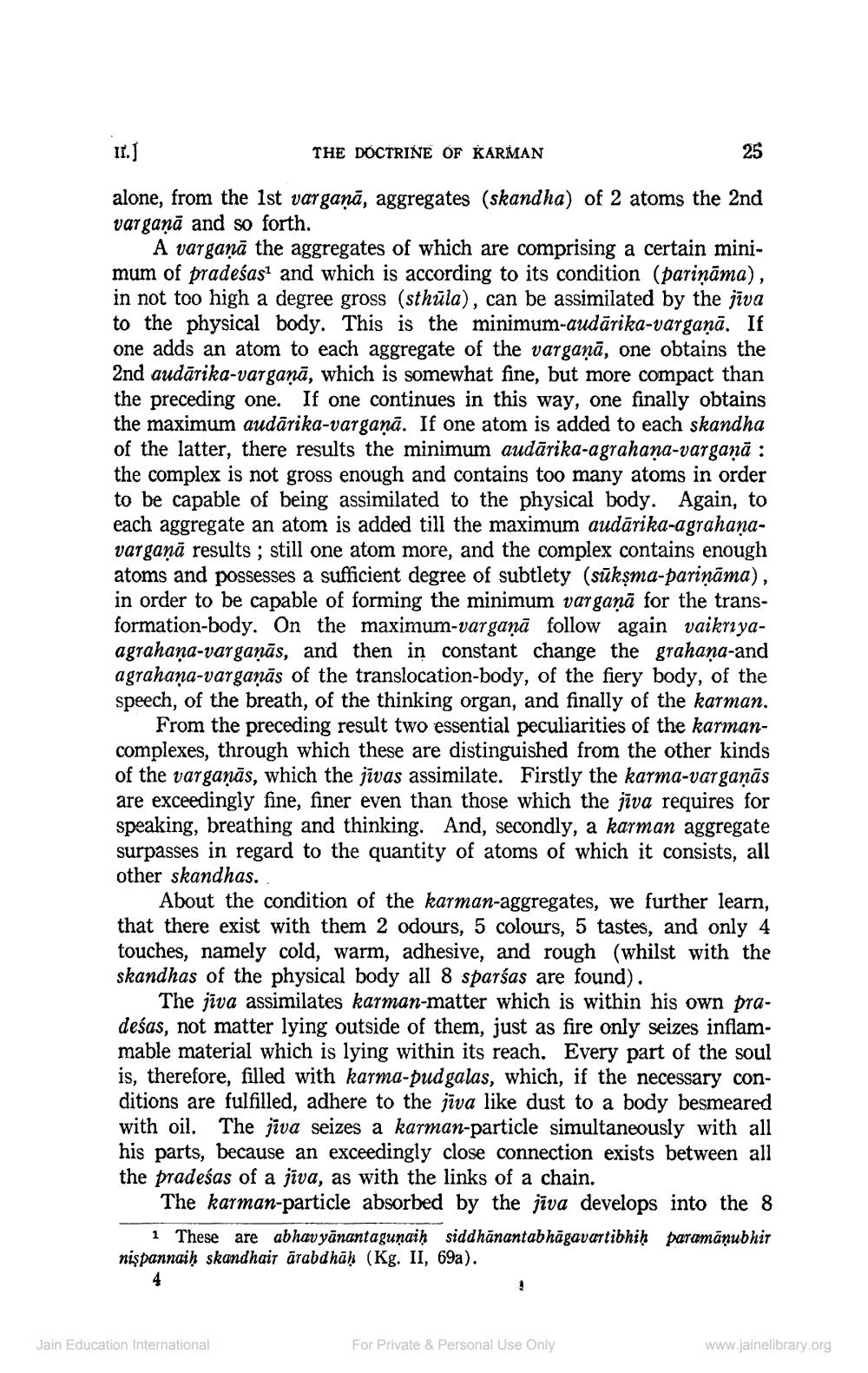________________
11.1
THE DOCTRINE OF KARMAN
alone, from the 1st varganā, aggregates (skandha) of 2 atoms the 2nd vargaņā and so forth.
A vargaņā the aggregates of which are comprising a certain minimum of pradeśasand which is according to its condition (parināma), in not too high a degree gross (sthūla), can be assimilated by the jīva to the physical body. This is the minimum-audārika-varganā. If one adds an atom to each aggregate of the varganā, one obtains the 2nd audārika-varganā, which is somewhat fine, but more compact than the preceding one. If one continues in this way, one finally obtains the maximum audārika-varganā. If one atom is added to each skandha of the latter, there results the minimum audārika-agrahana-varganā : the complex is not gross enough and contains too many atoms in order to be capable of being assimilated to the physical body. Again, to each aggregate an atom is added till the maximum audārika-agrahanavargaņā results; still one atom more, and the complex contains enough atoms and possesses a sufficient degree of subtlety (sūksma-pariņāma), in order to be capable of forming the minimum var ganā for the transformation-body. On the maximum-vargaņā follow again vaikriyaagrahaņa-vargaņās, and then in constant change the grahana-and agrahana-varganās of the translocation-body, of the fiery body, of the speech, of the breath, of the thinking organ, and finally of the karman.
From the preceding result two essential peculiarities of the karmancomplexes, through which these are distinguished from the other kinds of the vargaņās, which the jīvas assimilate. Firstly the karma-varganās are exceedingly fine, finer even than those which the jīva requires for speaking, breathing and thinking. And, secondly, a karman aggregate surpasses in regard to the quantity of atoms of which it consists, all other skandhas.
About the condition of the karman-aggregates, we further learn, that there exist with them 2 odours, 5 colours, 5 tastes, and only 4 touches, namely cold, warm, adhesive, and rough (whilst with the skandhas of the physical body all 8 sparsas are found).
The jīva assimilates karman-matter which is within his own pradeśas, not matter lying outside of them, just as fire only seizes inflammable material which is lying within its reach. Every part of the soul is, therefore, filled with karma-pud galas, which, if the necessary conditions are fulfilled, adhere to the jīva like dust to a body besmeared with oil. The jiva seizes a karman-particle simultaneously with all his parts, because an exceedingly close connection exists between all the pradeśas of a jīva, as with the links of a chain.
The karman-particle absorbed by the jiva develops into the 8
1 These are abhavyānantagunaiḥ siddhānantabhāgavartibhiḥ paramāņubhit nişpannaiḥ skandhair ārabdhāḥ (Kg. II, 69a).
Jain Education International
For Private & Personal Use Only
www.jainelibrary.org




